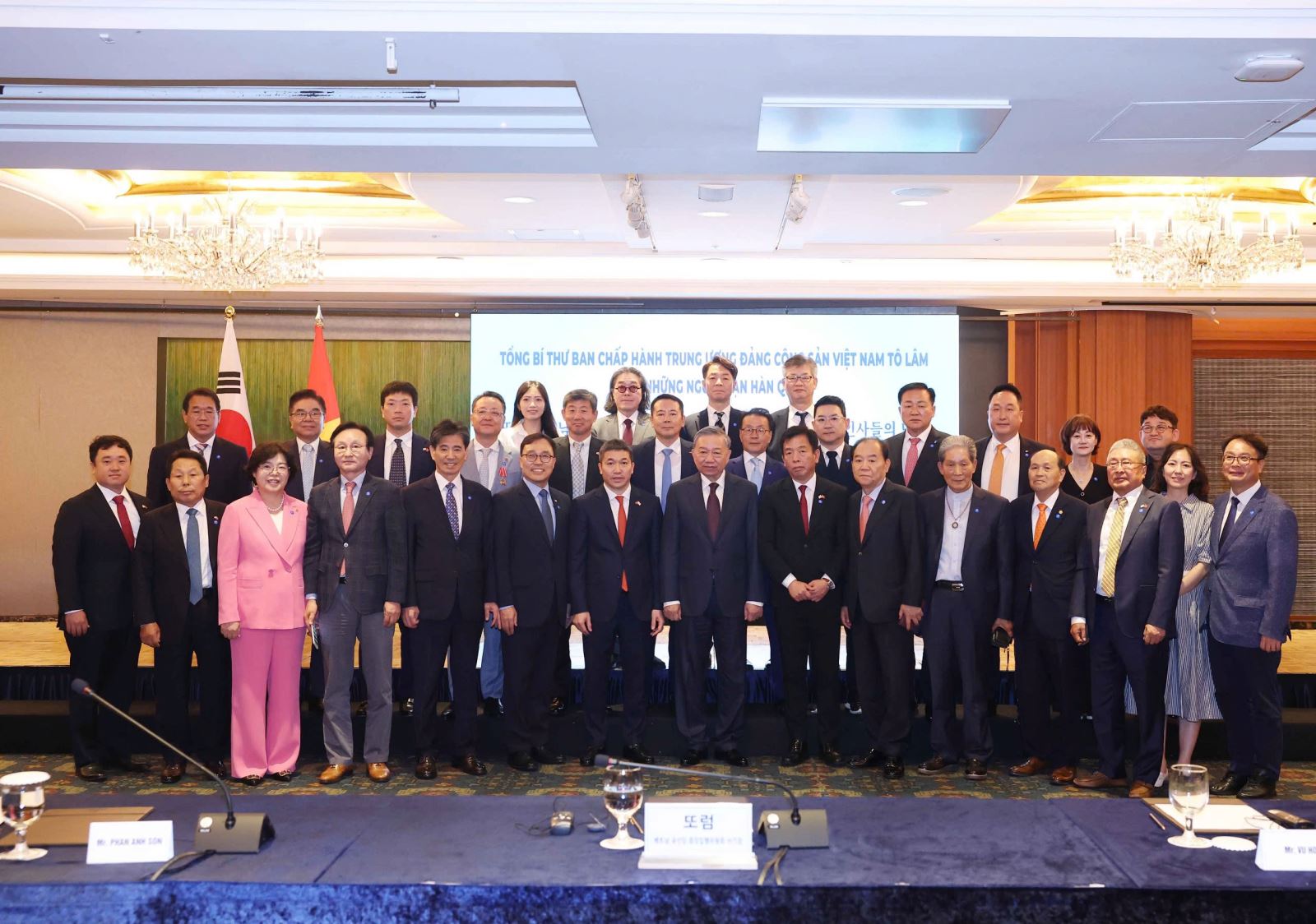Silent action in the heart of Paris
On November 15, 2024, Olivier Parriaux and Bernard Bachelard landed at Tan Son Nhat airport, starting a 5-day visit to Ho Chi Minh City. Both were over 80 years old. Olivier carried a faded canvas backpack, and Bernard pulled a light suitcase.
At the first meeting with representatives of Ho Chi Minh City, Olivier wore an old, thin, yellow shirt with the sleeves accidentally torn, and a dark T-shirt inside. When offered a new shirt and tie, he smiled and refused: "We want to meet everyone, including the city leaders, in a humble manner."
That simplicity reflects the spirit they carried more than half a century ago: acts done without declaration, without leaving a trace, or anyone knowing their names.
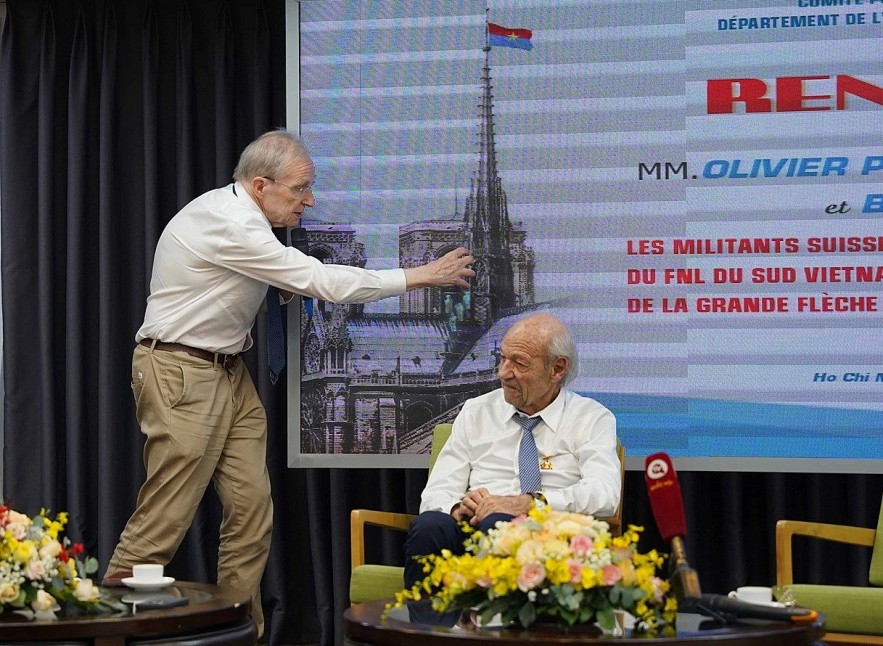 |
| From left: Olivier Parriaux and Bernard Bachelard, two out of the three people who hung the flag of the National Liberation Front of South Viet Nam on top of Notre Dame Cathedral's tower in Paris (France) in 1969. (Photo: Dan Tri Newspaper) |
On January 19, 1969, just before the first plenary session of the Paris Peace Conference on ending the war in Viet Nam, a startling sight appeared atop the 94-meter-high tower of Notre Dame Cathedral: the flag of the National Liberation Front of South Viet Nam fluttering above the 700-year-old symbol of France. It took police hours to reach the tower, ultimately resorting to a helicopter to remove the flag. The incident made headlines across French and international media, yet the identities of those responsible remained a mystery until 2023, when the book Le Viet Cong au sommet de Notre-Dame revealed three names: Olivier Parriaux, Bernard Bachelard, and Noé Graff.
During a conversation with young people in Ho Chi Minh City on November 15, 2024, Olivier reflected on that moment. At the time, global protests demanding an end to the war in Viet Nam were surging, and the group felt compelled to act. They chose Notre Dame Cathedral precisely because it was a global icon. None of them had ever climbed the tower before, so they studied its structure through books, especially a detailed architectural atlas, to devise a way to reach the summit.
The flag, measuring 17.5 square meters, was sewn by Bernard’s wife using silk: lightweight, durable, and ideal for catching the wind. It was carefully packed and secured for the climb, rigged so that a single tug on the rope would unfurl it in full view of the city below.
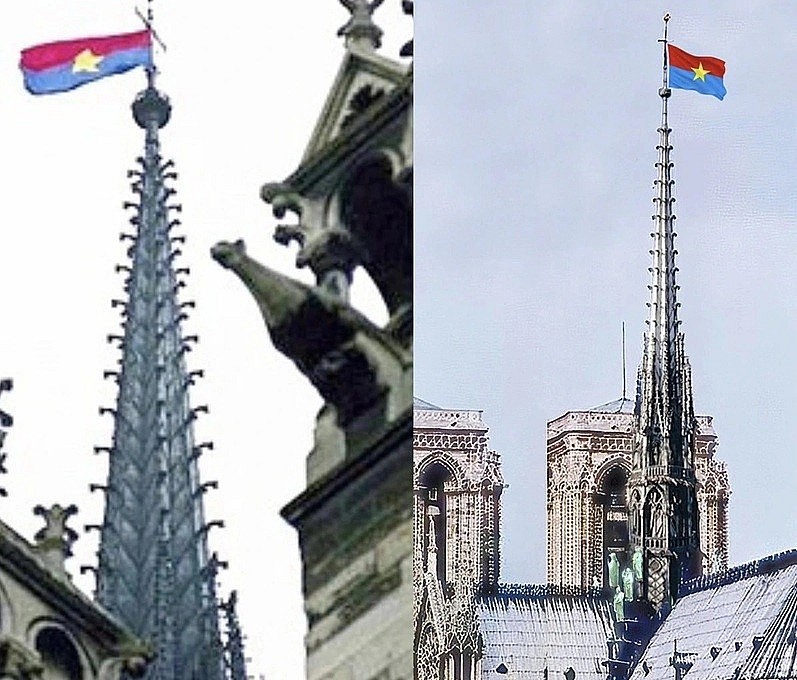 |
| The flag of the National Liberation Front of South Viet Nam flew on the top of the Notre Dame Cathedral in Paris on January 19, 1969. (Photo: AFP) |
On the morning of November 18, 1969, three young men, Olivier Parriaux, Bernard Bachelard, and Noé Graff, traveled from Lausanne (Switzerland) to Paris. Blending in with the crowd of tourists ascending the bell tower of Notre Dame Cathedral, they carried a blue and red silk flag tucked discreetly among their belongings. Experienced in mountaineering, Bernard was tasked with raising the flag, Olivier assisted him, and Noé kept watch.
They navigated the treacherous climb: slippery slopes, towering apostle statues, and a nearly three-meter gap between rooftops at a height of 36 meters. At one point, they nearly fell, but pulled each other to safety. Battling cold winds and centuries-old rust, Bernard secured a fixed hook and unfurled the flag. Olivier then cut away ten meters of iron steps to prevent its removal. With the flag flying high above Paris, the trio quietly slipped away. At 4:00 a.m. on November 19, police discovered the flag. It took 11 hours and a helicopter to remove it from the cathedral’s summit.
No one outside the group knew of the plan, and no police records ever captured their names. As Mr. Olivier later shared, they deliberately kept their identities hidden: “We didn’t want our names to overshadow the message. What mattered was showing the world that the Vietnamese people were not alone.”
In 2019, when fire ravaged Notre Dame and its iconic spire collapsed, the group realized that if they didn’t speak up, their memory would vanish with the flames. The book, published in 2023, stands as a testament to their act of international solidarity.
Following its release, Olivier and Bernard made the journey to Viet Nam to personally deliver the book and witness the transformation of the country they had once honored from afar.
Footsteps to extend international friendship
During 5 days in Ho Chi Minh City (November 15-19, 2024), Olivier Parriaux and Bernard Bachelard visited many places. They visited Cu Chi tunnels, War Remnants Museum, met with families of policy beneficiaries and victims of Agent Orange in Cu Chi district, and visited Hoa Binh Village - Tu Du Hospital.
In Cu Chi, when hearing about the damage caused by bombs, Bernard choked up: "We have read about it, but we cannot imagine the extent of the destruction. We cannot understand how this area has been revived".
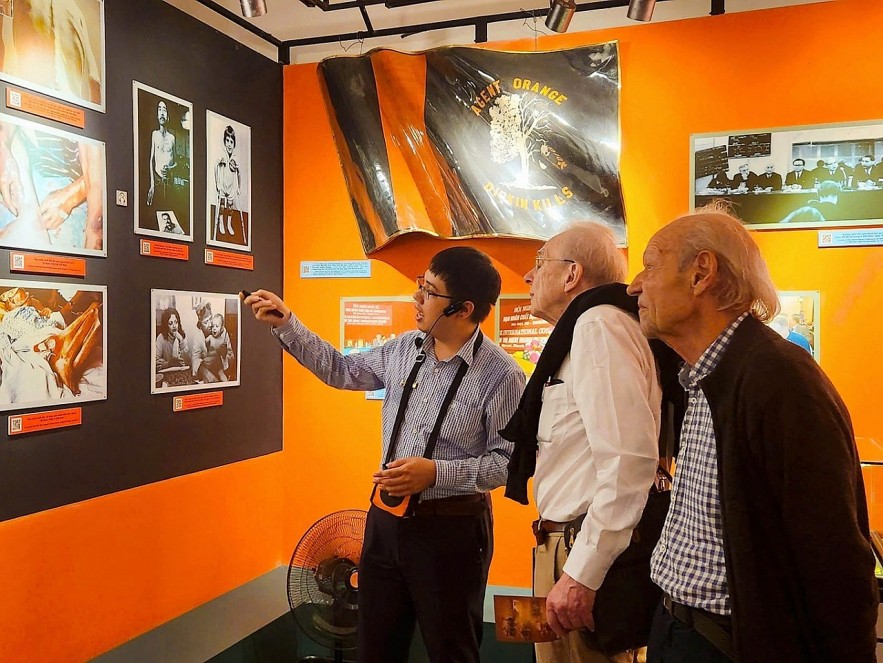 |
| Olivier Parriaux and Bernard Bachelard visit the exhibition on the consequences of Agent Orange/dioxin at the War Remnants Museum, November 2024. (Photo: War Remnants Museum) |
During their visit to the War Remnants Museum, Olivier and Bernard lingered in the “White Dove” room, a space dedicated to peace and designed especially for children. Olivier reflected that, in just a few days in Ho Chi Minh City, they were profoundly moved by the city’s transformation: a vibrant, modern metropolis that is difficult to imagine once endured such a devastating war.
At the Peace Village, which cares for more than 30 children affected by Agent Orange, Olivier shared a thought: “The war with Viet Nam has not truly ended. Its consequences continue to harm both people and the environment." Hernard added that back then, he climbed the tower to make the world look at Viet Nam; today, he had come to listen.
On November 18, 2024, Olivier announced his decision to join the legal case led by Tran To Nga, a French citizen of Vietnamese origin, against chemical corporations responsible for Agent Orange. “We have decided to stand with Tran To Nga and the French volunteer lawyers. This is a fight for justice, not just for Viet Nam, but for humanity.”
On November 17, 2024, Ho Chi Minh City Party Secretary Nguyen Van Nen presented the Ho Chi Minh City Badge to the two men, recognizing their symbolic actions. “It was a silent but meaningful contribution. It helped stir up world public opinion, encouraged the anti-war movement, and encouraged the Vietnamese people on the path to signing the Paris Agreement and unifying the country,” he said.
In a friendly farewell with friends and representatives of the City, Olivier said: “We did not come to be honored. We came because we still moving forward.” His days in Ho Chi Minh City will be told to his family, friends, and especially to today's Swiss youth, whom he hopes will continue the spirit of international solidarity the same way the young people of 1969 did.
Source: Vietnamtimes
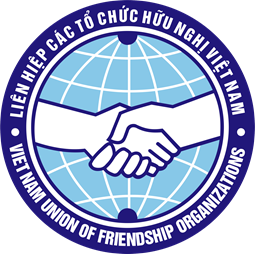
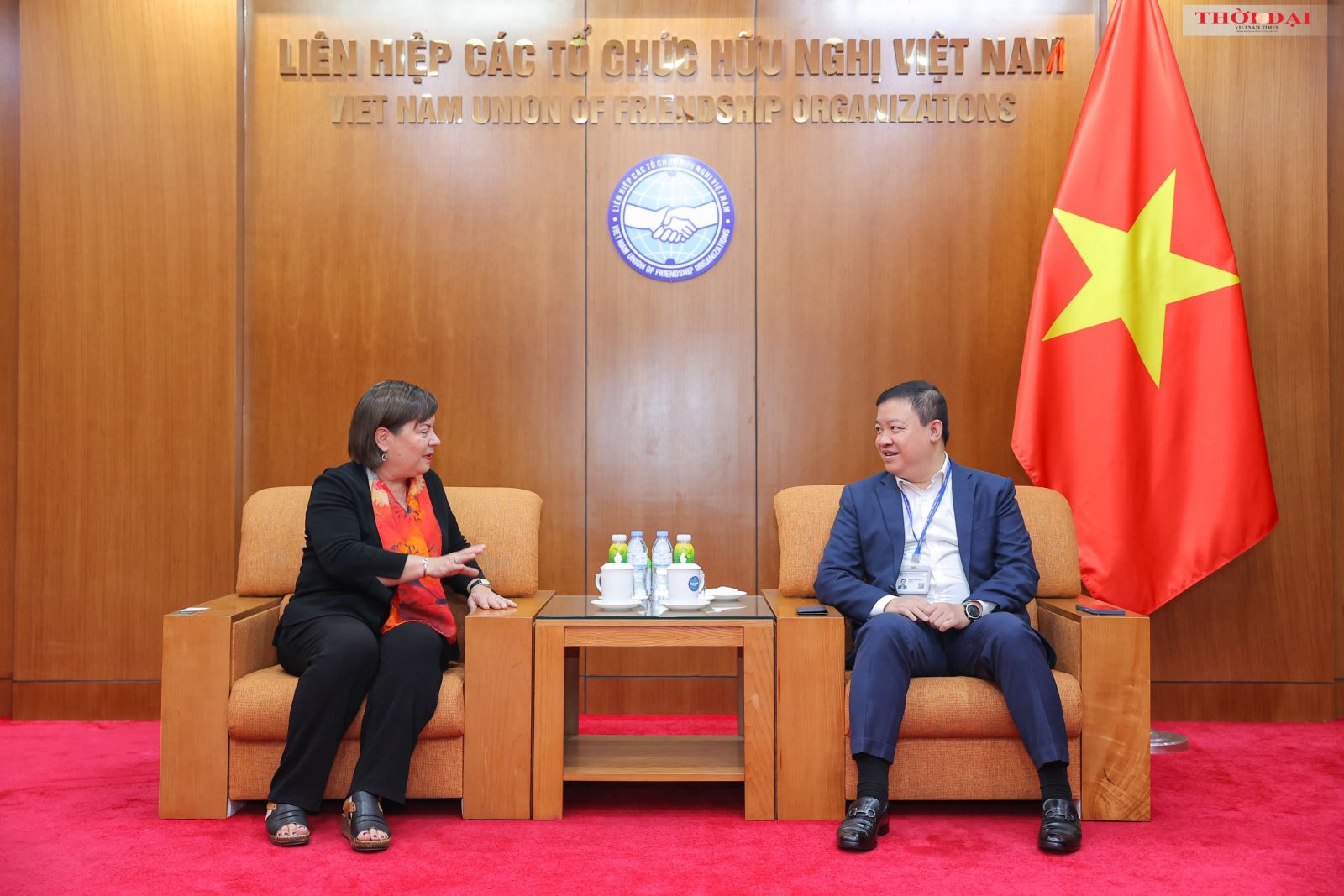
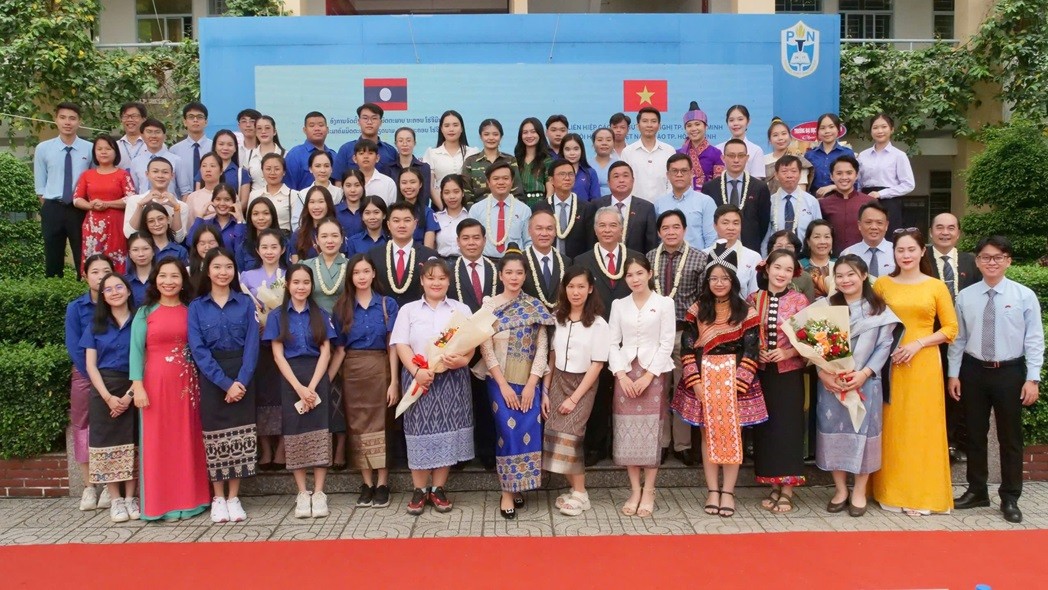
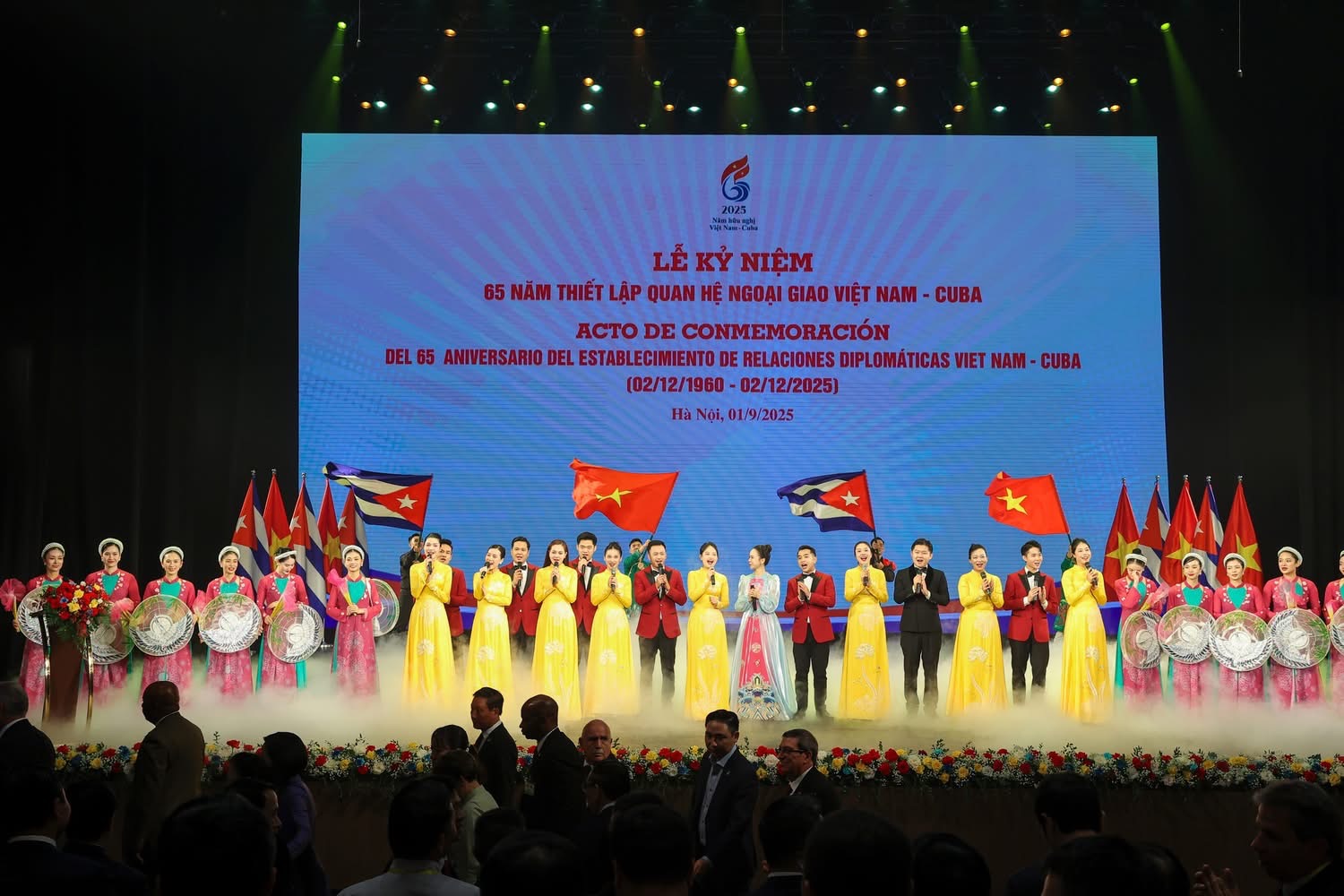
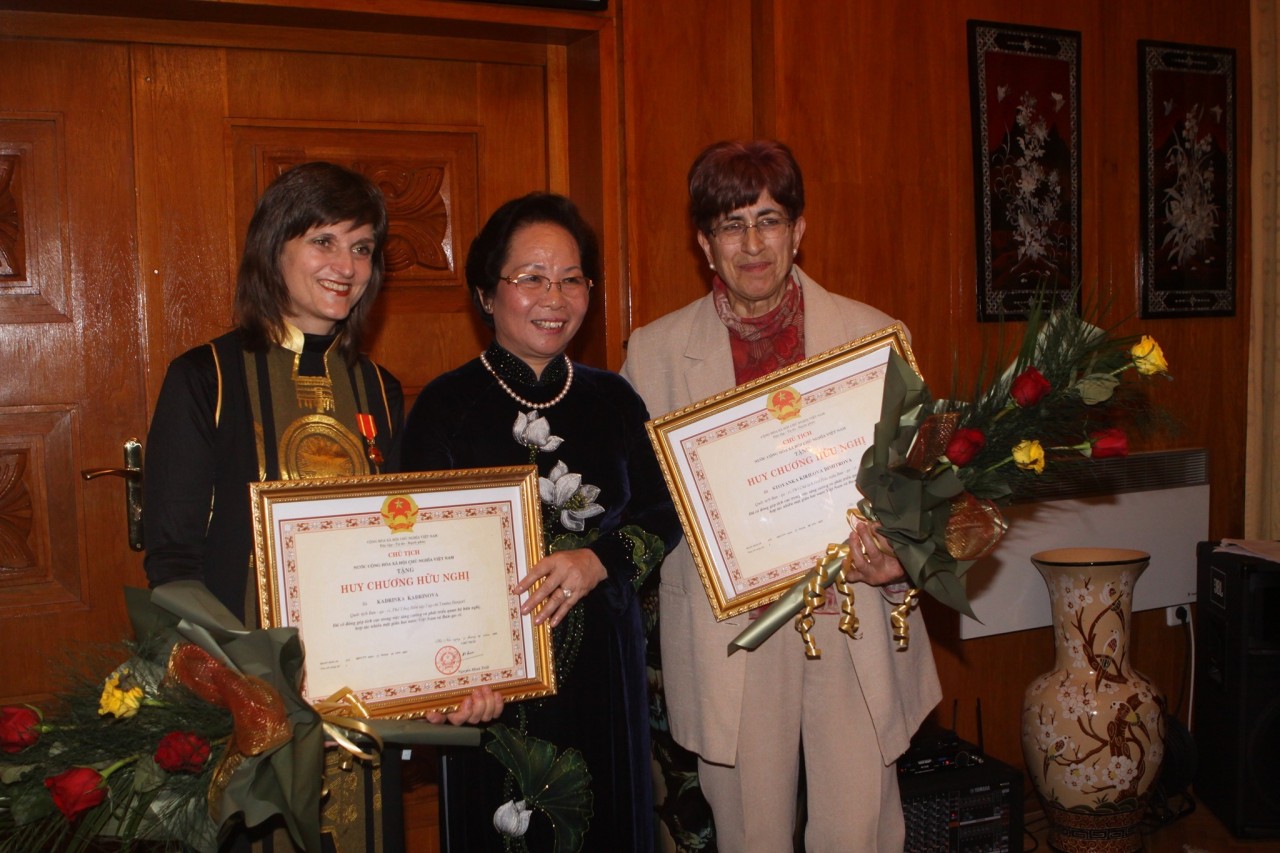
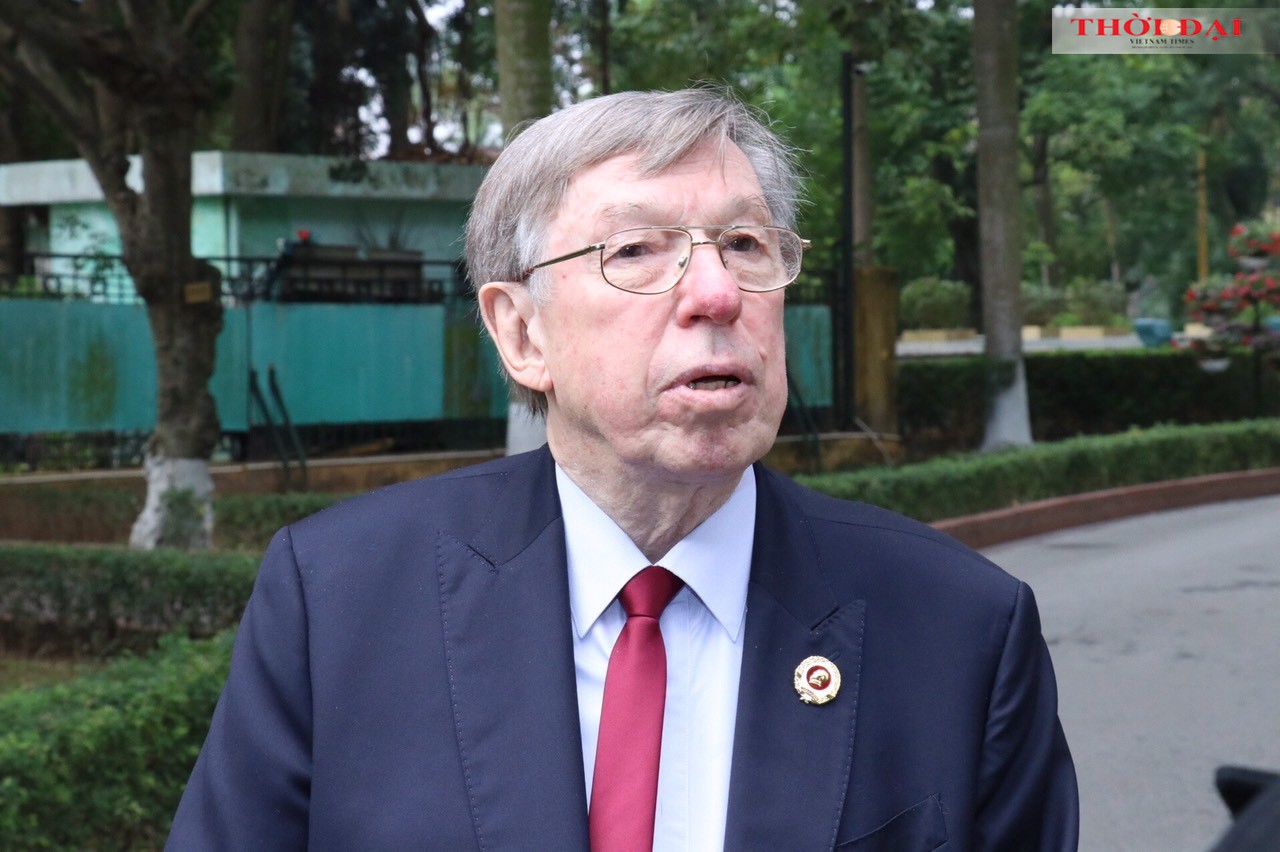
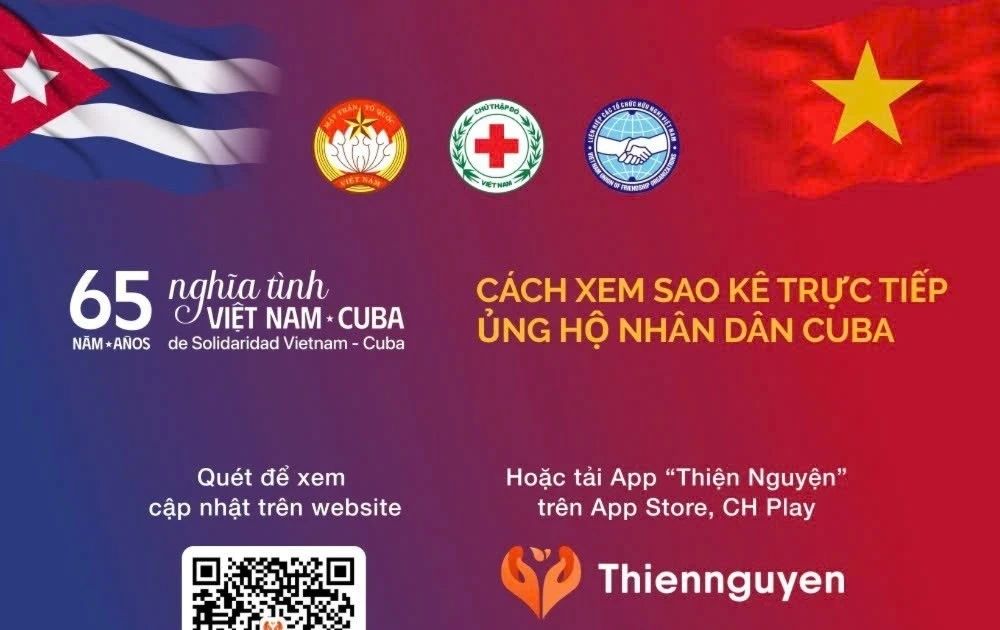
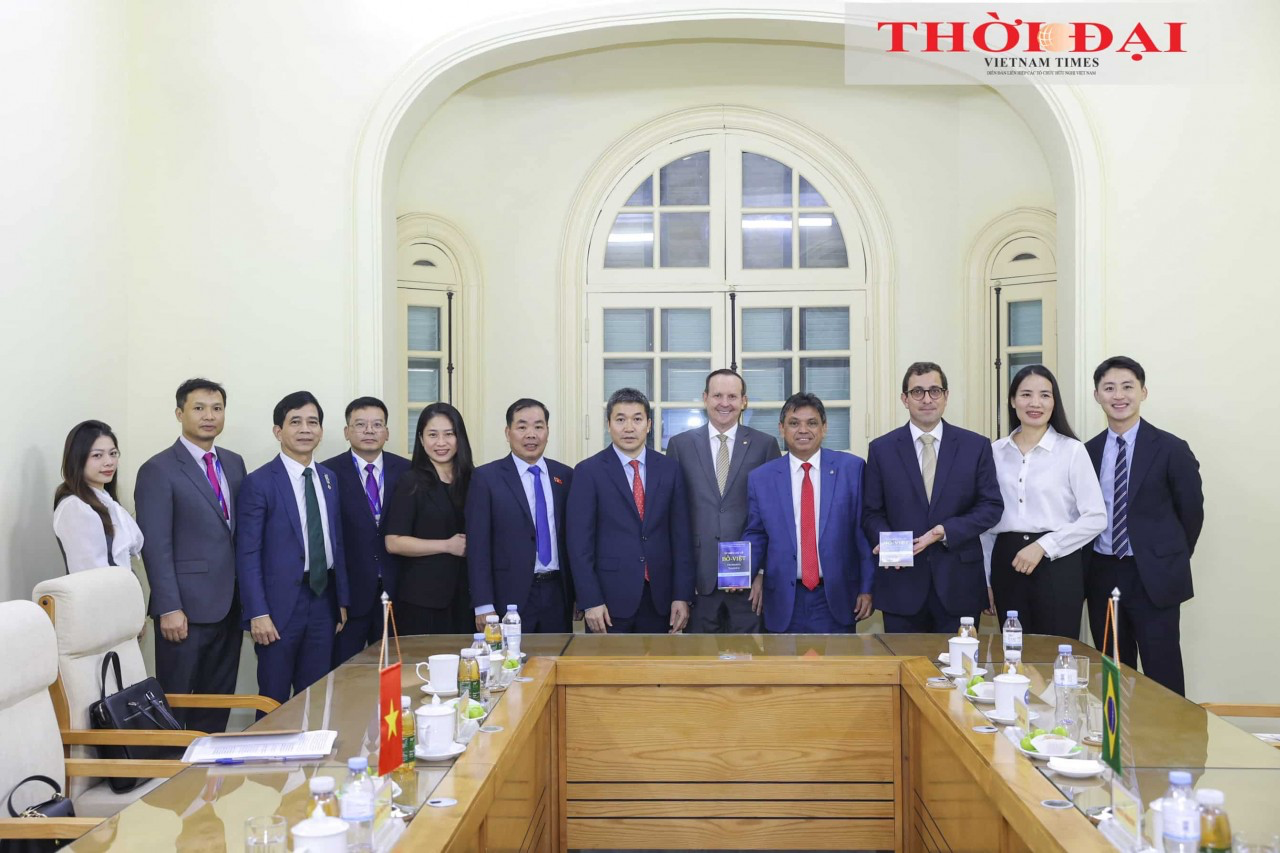
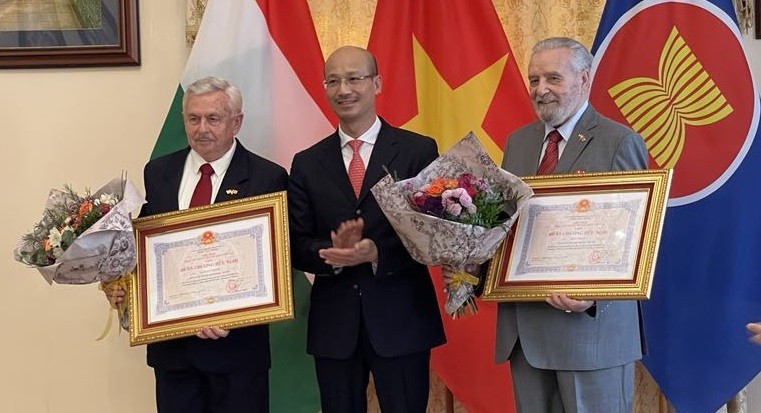
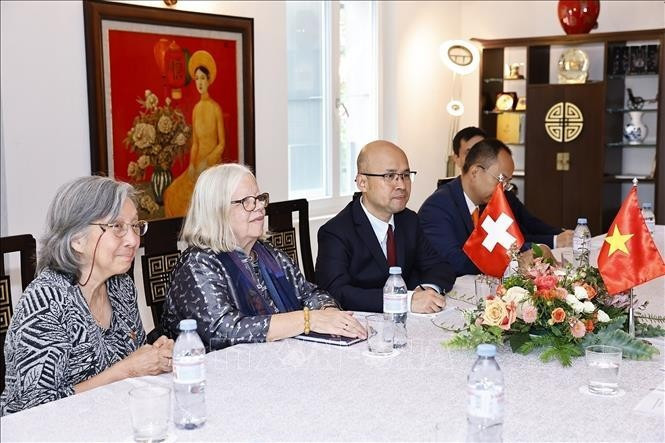
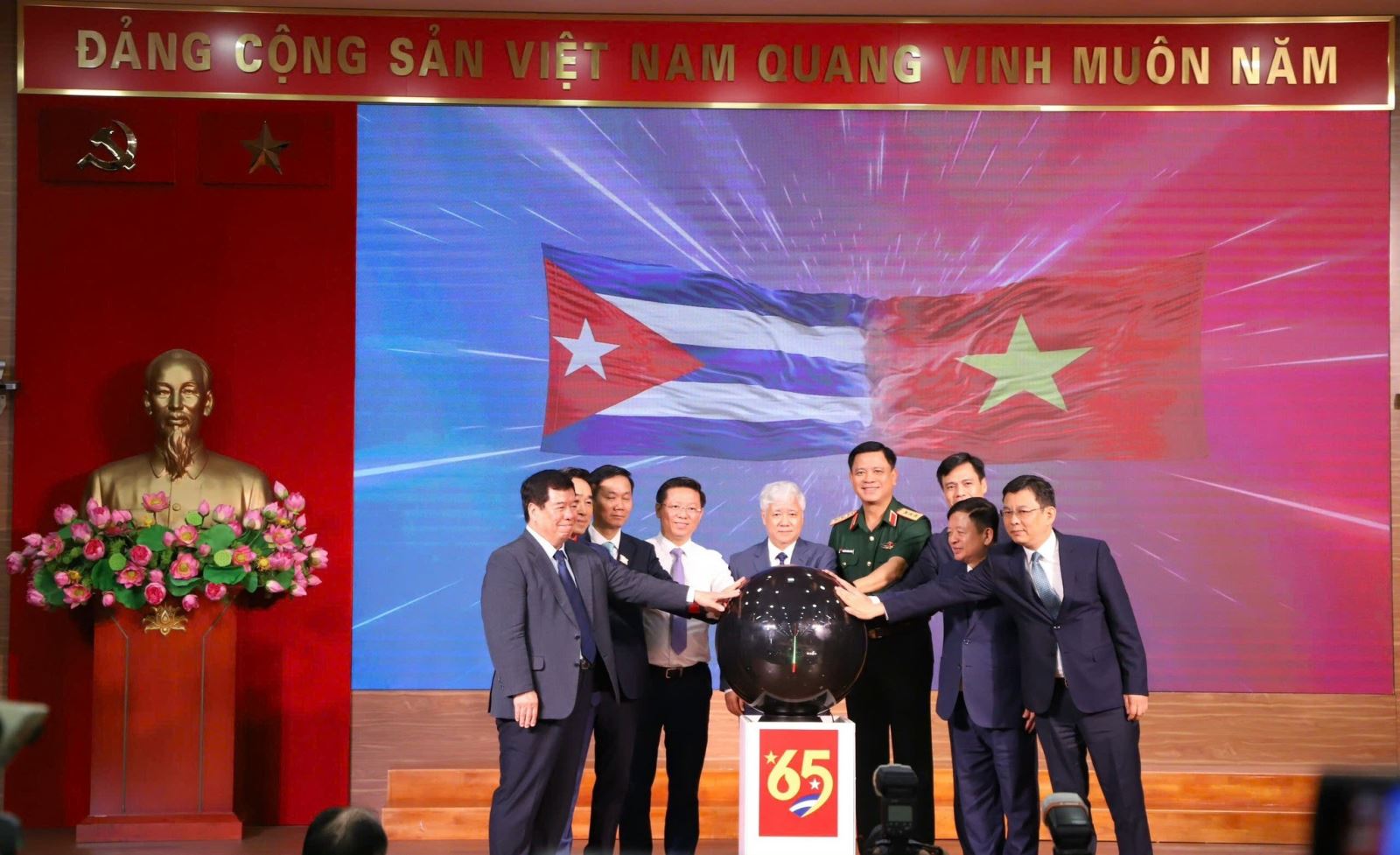
.jpg)
